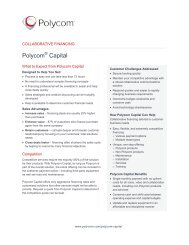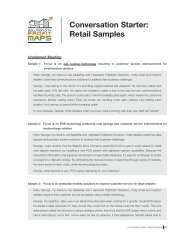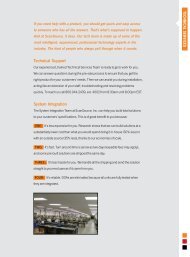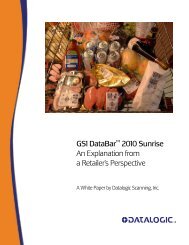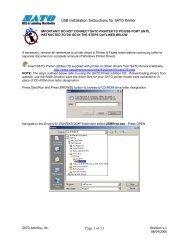The Benefits of Omni-Directional Imaging Scanning ... - ScanSource
The Benefits of Omni-Directional Imaging Scanning ... - ScanSource
The Benefits of Omni-Directional Imaging Scanning ... - ScanSource
You also want an ePaper? Increase the reach of your titles
YUMPU automatically turns print PDFs into web optimized ePapers that Google loves.
<strong>Benefits</strong> <strong>of</strong> <strong>Omni</strong>-<strong>Directional</strong><strong>Imaging</strong> <strong>Scanning</strong> Technology inRetail Point-<strong>of</strong>-Sale ApplicationsIntroductionFew developments have affected the enterprise’s supply chain as the ability to automatically capture bar code data.This is especially true at the point-<strong>of</strong>-sale in the retail industry. Capturing and analyzing bar code data has enabledsignificant operational efficiencies in ordering and inventory, merchandising, checkout productivity and customerservice. <strong>The</strong> retail checkout was forever changed in 1974 when the first bar code was scanned at a grocery storein Troy, Ohio (U.S.A.) with a scanner manufactured by Datalogic <strong>Scanning</strong>, Inc. Over the past three decades manychanges and advances have been made in scanning technology that have increased scanning speed while alsoimproving accuracy and usability.Current TechnologiesHistorically, there have been essentially two categories <strong>of</strong>technologies employed to read bar codes at the retail checkout:lasers and imagers. Laser bar code scanners employ either a singleor multiple visible light lasers and either move the laser beam inways to create an individual scan line or reflect the laser beamsfrom strategically placed mirrors to make various “patterns”. <strong>The</strong>objective in either case is to create a scan line or lines that will spanFigure 1: QuickScanthe width <strong>of</strong> the bar code and transmit the reflected light variances® QS6500BT Handheld Scannerfrom the bars and spaces <strong>of</strong> the bar code to a light collection device that the scanner then decodes and transmits tothe host terminal. One advantage <strong>of</strong> laser scanners is their ability to capture bar codes that move through the scanzone at high speeds, which can approach 100 inches per second (IPS).Because <strong>of</strong> this capability, laser scanners, in certainconfigurations, are especially suited to high volume checkoutslike those found in supermarkets. <strong>The</strong>re are three basic types<strong>of</strong> laser scanners: single line, used primarily in handheldscanners; single plane using a pattern <strong>of</strong> scan lines that arecreated by reflecting the laser from a series <strong>of</strong> mirrors; and bioptic,essentially two single plane scanners combined to formboth horizontal and vertical planes. Bi-optics and single planeFigure 2: Magellan ® 8500 Bi-optic Stationary Scanner scanners can read part <strong>of</strong> a bar code label with one scan line<strong>The</strong> <strong>Benefits</strong> <strong>of</strong> <strong>Omni</strong>-<strong>Directional</strong> <strong>Imaging</strong> <strong>Scanning</strong> Technology in Retail Point-<strong>of</strong>-Sale ApplicationsPage –





